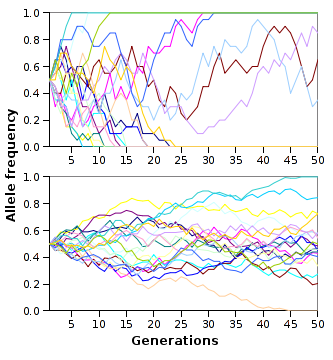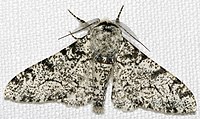Adaptive value

The adaptive value represents the combined influence of all characters which affect the fitness of an individual or population.
Definition
[edit]Adaptive value is an essential concept of population genetics. It represents usefulness of a trait that can help an organism to survive in its environment. This heritable trait that can help offspring to cope with the new surrounding or condition is a measurable quantity.[2] Measuring adaptive value increases our understanding of how a trait helps an individual's or population's chances of survival in a particular set of conditions.[3]
Measurement
[edit]The adaptive value can be measured by contribution of an individual to the gene pool of their offspring. The adaptive values are approximately calculated from the rates of change in frequency and mutation–selection balance.[2]

Examples
[edit]- Avoiding Predators Some plants use indirect plant defenses to protect themselves against their herbivorous consumers. One of defensive mechanism that plants employ is to release volatile chemicals when herbivores are feeding from them. The odor of volatile chemical attracts carnivores’ attention, and they get rid of herbivores by eating them.[4]
- Sexual Reproduction Advantages Sexual mimicry is common among animals. Male cuttlefishes uses this strategy to gain advantage over other males competitor. They mimic female cuttlefish's marking to fool guarding male and fertilize their females. This strategy has more success rate than normal courtship.[5]
See also
[edit]External links
[edit]References
[edit]- ^ "Evolution".
- ^ a b Wallace, Bruce (September 1952). "The Estimation of Adaptive Values of Experimental Populations". Society for the Study of Evolution. 6 (3): 331–341.
- ^ Moran & Lehet. "Visual Mimicry in Cephalopods". Reed College. Retrieved 25 November 2013.
- ^ Kaplan, Ian (November 1, 2012). "Trophic Complexity and the Adaptive Value of Damage-Induced Plant Volatile". PLOS Biology. 10 (11): e1001437. doi:10.1371/journal.pbio.1001437. PMC 3507926. PMID 23209381.
- ^ Hanlon, Roger T.; Naud, Marié-Jose; Shaw, Paul W.; Havenhand, Jon N. (20 January 2005). "Behavioural ecology: Transient sexual mimicry leads to fertilization". Nature. 433 (7023): 212. Bibcode:2005Natur.433..212H. doi:10.1038/433212a. PMID 15662403. S2CID 1128929.


